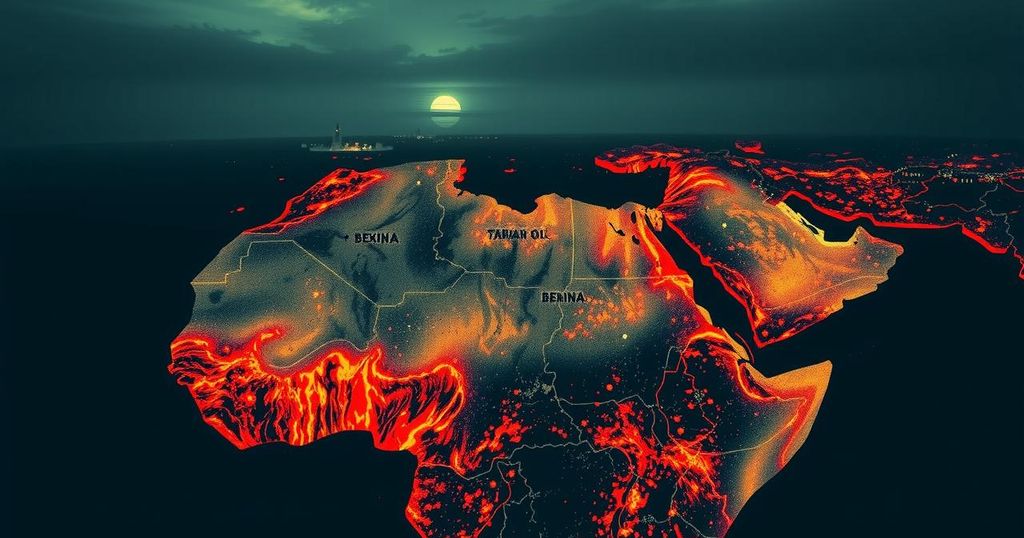Benin’s economy heavily relies on agriculture and foreign aid, particularly from France. Despite government reforms aimed at reducing dependency, corruption and economic stagnation persist. Agriculture engages about 70% of the workforce, while sectors like fishing and oil are emerging. Benin’s economic recovery is influenced by privatization and foreign investment, though challenges such as trade imbalances and infrastructural deficiencies remain.
The Republic of Benin, despite being rich in resources and a historically agricultural economy, continues to struggle with economic dependency, primarily on foreign aid from France and international organizations. Following a 1972 coup, various economic reforms including nationalization and socialist principles aimed at decreasing dependency, but corruption and stagnation impeded significant progress. The country has seen shifts towards liberalization, privatization, and foreign investment since the early 1990s, yet challenges remain. Agriculture employs about 70% of the workforce, contributing staples like cassava and yams, while also boosting cash crops like cotton and palm oil. Fishing and offshore oil resources have potential for growth as well. Manufacturing is still evolving, with key industries in palm oil processing and cement among others. Finance saw a transition from state to private banks, supported by foreign aid and investment. Though Benin exports agricultural products primarily to Asia, trade challenges exist, particularly due to smuggling. The transportation infrastructure includes a limited network of roads, railways, and an international airport.
Benin’s economy is shaped profoundly by its history of colonialism and dependence on international aid. Following independence, the government sought to reduce reliance on France through socialist reforms in the 1970s. However, the economic landscape remained marred by corruption and ineffective policies until a shift towards liberalization in the 1990s. Understanding the evolution of Benin’s economic policies sheds light on its current status—marked by agriculture, fishing, and emerging oil sectors—within a context of ongoing dependency and challenges.
In conclusion, while Benin has made strides in diversifying its economy and focusing on agriculture and resource extraction, significant challenges remain. These include reliance on foreign aid, corruption, and an underdeveloped infrastructure. As the country continues to liberalize its economy and attract private investment, it will be critical to navigate these obstacles to foster sustainable growth and improve the standard of living for its citizens. The interplay of governmental policies, corruption, and external influences will shape Benin’s future economic trajectory.
Original Source: www.britannica.com






